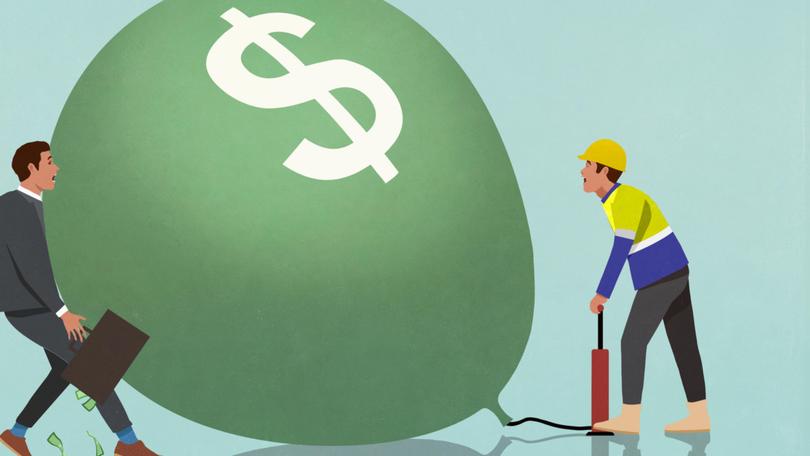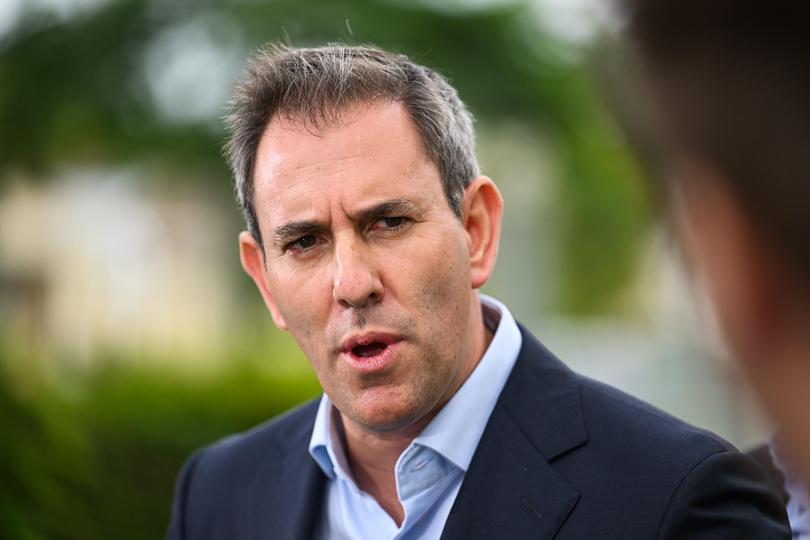Pay rise of 3.4pc is good news for workers, but with productivity going backwards, business is taking a hit

Good news for workers, with wages growing 3.4 per cent. Education, healthcare and social assistance workers will be especially pleased, with the states topping up their pay packets by 3.6 per cent.
For private sector workers, the news wasn’t as good. Their pay only rose by 3.2 per cent.
For most economists, this was a clear sign that the Reserve Bank can comfortably cut interest rates next week, even if wages are outpacing headline inflation of 2.4 per cent.
Sign up to The Nightly's newsletters.
Get the first look at the digital newspaper, curated daily stories and breaking headlines delivered to your inbox.
By continuing you agree to our Terms and Privacy Policy.The increase also puts workers back on track towards equilibrium after a period when inflation ran well ahead of wages.
“Adjusted for inflation, Australian wages remain low, despite increasing in the March quarter. And a full recovery may take a number of years, highlighting just how much damage has been done in recent years,” Callam Pickering, APAC economist at global job site Indeed, said.
Treasurer Jim Chalmers was pleased and said the result vindicated his economic management. He also rejected criticism that public sector spending would reignite inflation.
“There’s absolutely no sign of a wage price spiral in our economy, and that’s because we’ve been getting these decent wages outcomes at the same time as we’ve been getting very encouraging outcomes on lower inflation,” he said.
“We know that when we get encouraging wages data like this, we often hear from the usual suspects who talk about a wage price spiral. There’s been no evidence of that.”

But Warren Hogan, economic adviser to Judo Bank, a specialist business lender, said the wages uplift was putting pressure on business profitability and would ultimately become an inflationary factor that could constrain the RBA.
He said a more important metric the government should focus on is unit labour costs. On that front, the figures were especially worrying.
“Pre-COVID the RBA would say 3.5 per cent wages growth is consistent with the inflation target. But that assumed productivity is 1 per cent, which is what it was in previous decades. Now productivity is negative, that has pushed unit labour costs off the charts, and they are growing at 5 per cent,” Mr Hogan said.
The growing wages bill, unlinked to productivity, is being compounded by high costs for interest rates, energy and services like insurance, meaning businesses are increasingly strained, according to business groups.
Innes Willox, chief executive of the Australian Industry Group, said that excluding the COVID period and stripping out miners and banks, business profitability was at its worst in 30 years.
He said public sector spending was distorting the market.
It’s a cash splash by state governments that is putting real pressure on the private sector to keep up to try to retain staff, Mr Willox said.
Luke Achterstraat, chief executive of the Council of Small Business Organisations Australia, described conditions as “one of the toughest in living memory” and said that for every dollar of a wage rise, businesses had to absorb additional employment costs.
“Don’t forget with the cost of employing someone, on top of wages you’ve got superannuation which is going up 0.5 per cent on 1st July, workers’ compensation which is becoming quite expensive as well, and then payroll tax. When you add all of this up, a dollar increase in wages is a factor of maybe six or seven times,” he said.
Business profitability, or the lack of it, is contributing to elevated levels of insolvency, according to insolvency monitor CreditorWatch.
In March, it found invoice payment defaults were up 42 per cent year-on-year, while insolvencies jumped 17 per cent.
Business closures were most acute in hospitality and construction, which accounted for 40 per cent of insolvencies, although failures had declined from the February peak. The Australian Tax Office’s move to collect unpaid taxes following COVID-era relief was a significant contributing factor.
CreditorWatch chief economist Ivan Calhoun said insolvencies in the hospitality sector were at record highs.
“Hospitality firms are squeezed between the increased cost of doing business, with wages, insurance, rent and electricity, while on the other side they are being affected by a cost of living hit to revenue,” Mr Calhoun said.
Business groups are now lobbying ahead of the Fair Work Commission’s upcoming deliberation on wages, which effectively sets pay rates for 2.9 million workers from 1 July.
In May, Labor wrote to the Commission proposing an “economically sustainable” real wage increase, which would result in a lift in the minimum wage from its current $24.10 per hour.
Mr Willox said the Australian Industry Group would argue that much of the “catch-up has already happened.” He said there was a significant mismatch between the 2.6 per cent increase advocated by business groups and the 4.5 per cent increase proposed by unions.
“Part of the big discussion is what the Commission does around driving productivity as part of the wage increases. Last year they made it clear that above-inflation wage increases had to be productivity linked. This year will be the test if they follow that through,” Mr Willox said.
Mr Achterstraat said productivity was the “elephant in the room” in the Australian economy, among the worst in the world, and needed to be given full attention by the re-elected government.
“With the appointment of all these braniacs, as Jim Chalmers called them, coming into the Ministry—like Dan Mulino, Andrew Charlton, as well as Andrew Leigh—they should be having a much more honest conversation about productivity challenges,” he said.
“Small business is telling us they spend up to 15 hours per week on paperwork, so if we can actually reduce that burden, that’ll help them boost output. That is how we deal with productivity.”

